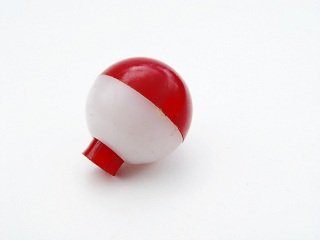 Terminal tackle seems to be one of those categories that, while so very vital to our gear, is often pushed to the wayside, in terms of importance. Not everybody feels this way, mind you, but I’ve encountered numerous anglers throughout the years who, after spending what feels like hours scouring the lure aisles or comparing baits, simply grab a package of hooks or floats off the shelf as they walk by, or even walk by the aisle completely. This is valid, since some don’t use bobbers, but slip floats can be utilized in several situations, and their effectiveness should never be overlooked. However, they can be difficult to manage at times, especially when trout fishing on the river during cold winter months, or they get dropped into the current on accident. If you find yourself struggling with such issues, a friend of mine recently showed me how he makes his own slip bobbers, and with his permission, I’m sharing his technique with you today.
Terminal tackle seems to be one of those categories that, while so very vital to our gear, is often pushed to the wayside, in terms of importance. Not everybody feels this way, mind you, but I’ve encountered numerous anglers throughout the years who, after spending what feels like hours scouring the lure aisles or comparing baits, simply grab a package of hooks or floats off the shelf as they walk by, or even walk by the aisle completely. This is valid, since some don’t use bobbers, but slip floats can be utilized in several situations, and their effectiveness should never be overlooked. However, they can be difficult to manage at times, especially when trout fishing on the river during cold winter months, or they get dropped into the current on accident. If you find yourself struggling with such issues, a friend of mine recently showed me how he makes his own slip bobbers, and with his permission, I’m sharing his technique with you today.
I’ll admit that there are times when I get frustrated on the river because the line doesn’t want to flow through the slip float smoothly. I know for a fact that I’m not the only angler who experiences this with many of the models of slip floats on the market. Well, when my buddy runs out of floats or forgets to bring them, he uses plastic bobbers, found in the bobber aisle right next to the slip floats. However, he customizes them a bit to suit his purposes and convert them into slip bobbers.
He starts with a standard plastic bobber, but then removes the spring and hook with a pair of needle nose pliers. Once the spring and hook are removed, you’re left with a perfectly buoyant bobber that has a tunnel through the middle. From there, you simply rig the float like you would a normal slip float. Some people find that the smaller size of the plastic bobber is easier to work with.
Sometimes we need to take things into our own hands on the water, and my friend’s McGuyver-like customization of a standard plastic bobber is just one example of such measures. There are many who have no trouble whatsoever with the slip floats found at their local retailer, but I’ve seen quite a few people struggle with them. I know this easy, but effective technique will save some people quite a bit of frustration and give them more time to fish. I don’t know any angler who wouldn’t want that.








